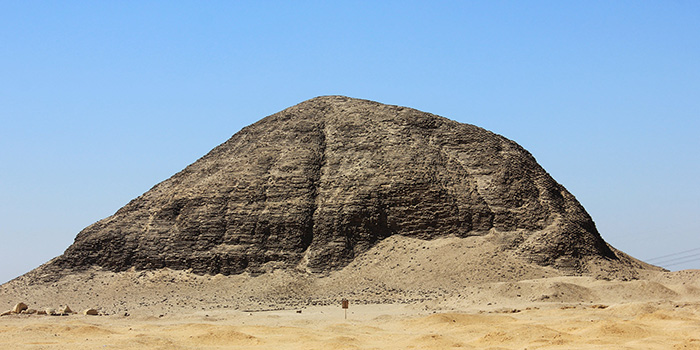
In Egypt, there are more than 200 pyramids, not only the famous ones at Giza, some of them are still in good shape, some are not, but they all have great archeological importance.
Hawara Pyramid is one of the Egyptian heritages from Pyramids; it belongs to King Amenemhat III, who was the last powerful ruler of the 12th dynasty, during the middle kingdom.
Probably, you won’t recognize that this is a pyramid from the first look, it could easily be seen as a hill, just a hill in the middle of the desert.
Ironically, this is the second attempt to build a pyramid by the King, the first one was at Dahshur, called by the black pyramid, and it had also collapsed. Maybe the middle kingdom wasn’t that good at construction as the old kingdom and the new kingdom.
The pyramid location is at what we know now by Fayum Oasis; it was called back in time by Crocodilopolis or Krokodilopolis; this name was called by Greeks as the area was named after Sobek, the crocodile god.
Amenemhat III built this pyramid in the 19th century BC, after the failure of his first one, the Black Pyramid at Dahshur. It was made of mud bricks, with a core and facing of limestone. Most of the facing stones had been removed to be used in other buildings.
The Hawara Pyramid complex had once a mortuary temple which was next to the pyramid; this temple had contained a lot of passages and courtyards, that Herodotus has called it “Labyrinth” of Hawara or the “Egyptian Labyrinth.”
Diodorus Siculus, a Greek historian, had claimed that the Labyrinth of Crete, the house of Minotaur, was basically inspired from the one of King Amenemhat III at Hawara, Egypt.
Maybe this tomb of King Amenemhat III is not perfect, and couldn’t keep his pyramid shape over centuries. Still, of course, it has a lot of secrets to be revealed, and it tells us a lot about a period in Egyptian history that was maybe not so luxurious.

A Nile River cruise in Egypt is a journey through time, allowing you to explore this historic
The History of Ancient Egyptian Mummies is a captivating tale that weaves together the mysteries
Egypt is known for its rich history & amazing ancient wonders, but it also brags an incredible
Egypt, with its rich history, ancient wonders, and breathtaking landscapes, offers an unparalleled
Egypt, a land shrouded in mystique and grandeur, has a rich and captivating history spanning